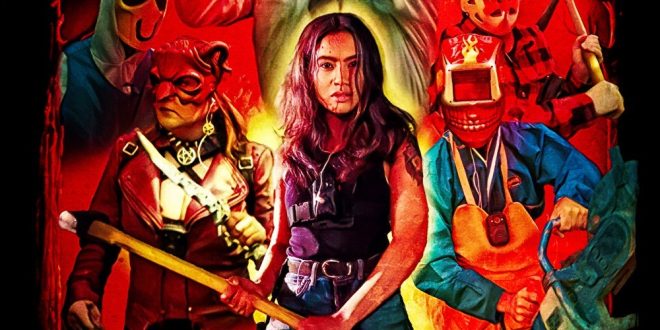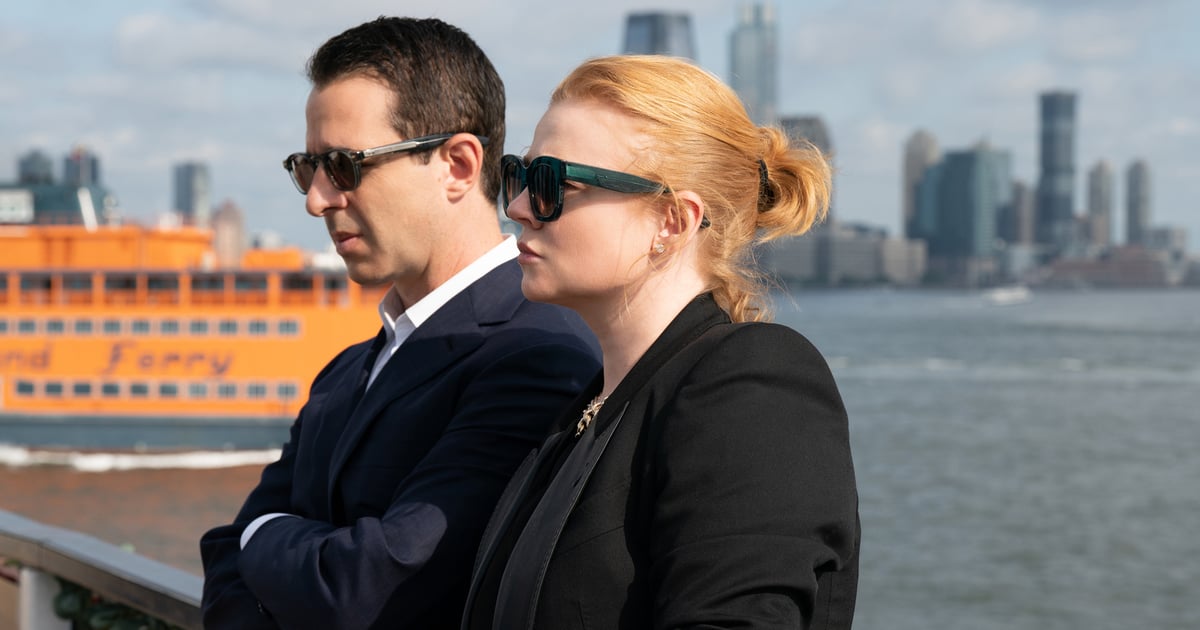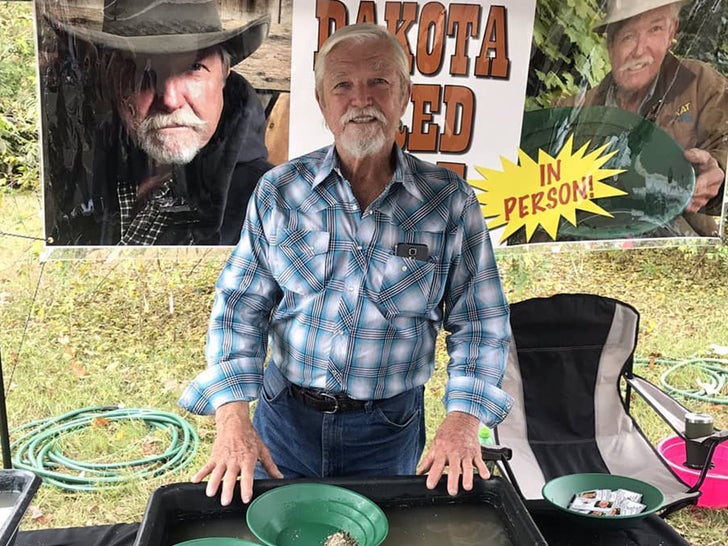Considering his future fame playing a certain Baron, it is an amusing coincidence that Peter Cushing’s very first job in the movies was under the direction of James Whale, director of the classic 1931 Frankenstein, as a double for star Louis Hayward in The Man in the Iron Mask (1939). Hayward played twins in the film and Cushing played the opposite role for each take. Though he was cut out of the film and Hayward’s two halves spliced together in order to appear opposite himself, Cushing learned much about film acting from the experience as he was allowed to watch dailies and critique his own performance. As a reward for his work, he was given a small role in the film as the King’s Messenger. He would work with Whale once again near the end of his brief sojourn in Hollywood before returning home to his beloved England where he would toil for another ten years before finding his first real success on television. As with the horror icons of the previous generation Bela Lugosi and Boris Karloff, Cushing began acting early but did not find fame until his forties. But his patience, tenacity, hard work, and unbridled honesty paid off. In every life there are joys and griefs, challenges and victories, it is what is done with them that makes a person who they are. What Peter Cushing did with his made him an icon.
George and Nellie Cushing’s second son, Peter Wilton Cushing, was born on May 26, 1913, and he later describe his childhood as a happy one. He fell in love with the theater during a Christmas trip to London to see Peter Pan with his parents and was never the same. He also developed early interests in books of fantastical stories, collecting model soldiers, and performing, beginning with his first stage appearance as a kind of hobgoblin in a kindergarten play and then producing his own puppet shows. “As far back as I can remember, I had a passion for dressing up and playing games of ‘Let’s Pretend’, which are, or course, the basic principles of acting, and if you are lucky enough, you get paid for so doing, hard work though it may be,” he later wrote. He was also an avid patron of the burgeoning film industry with his first favorite star being cowboy hero Tom Mix, who he would later meet in a chance encounter.
Despite his inquiring mind and incessant curiosity, Peter did poorly in school largely out of lack of interest. Strangely enough, this led to his first real encounters with working in the theater. His physics master DJ Davies also produced the school plays and allowed him to skip physics classes to paint scenery. It was a task that Peter greatly enjoyed, and it eventually led to him playing parts and eventually leads in all the school productions. Upon graduation, Peter’s father practically forbade that he make a go at the actor’s life and, because of his son’s artistic ability, got him a job in the Drawing Office in the Surveyor’s department. It was 1933 and Peter Cushing was doing exactly the opposite of what he wanted to do. In his off time, he would sneak into theaters simply to take in the atmosphere. He was able to connect with community theater companies and began scouring the “actors wanted” ads of The Stage magazine. He took to writing letters of inquiry to every ad he could find, but due to his lack of professional experience received no responses.
“One day, I decided to end it all,” he later wrote. He made arrangements to travel to the coast with the intention of throwing himself from a cliff to the rocks below. Instead, as he stood near the edge he was overtaken by the beauty surrounding him and followed a bird to a nearby coastal inn and had a Devonshire cream tea. He realized that life was good and worth living. On the train back home, he found an advertisement for drama classes in a magazine that had been discarded in the luggage rack. He decided to apply to the Guildhall School of Music and Drama and met actor Allan Aynesworth soon after for an interview. According to his autobiography, Aynesworth asked “Well, laddie, and what can I do for you?” to which Cushing answered in his heavy cockney accent “I wanna gow onna styge.” Aynesworth was horrified and cried, “Take him away! His voice offends me!” A kindly secretary consoled the young man and gave him a book to help him improve his diction. He took to taking long walks to practice his elocution outdoors, at times alarming the residents of the area. After many of these walks had produced some improvement, he was accepted to Guildhall and put far more work and drive into his studies there than he ever had in his previous education.
He continued to bombard professional theater groups with letters of inquiry and was eventually called in to the office of one of the targets of his incessant campaigning, Bill Fraser of The Connaught Theater. He was so excited by this turn of events that he quit his job and “I burnt all my boats behind me.” Upon arriving at Fraser’s office, he was told “I cannot help but admire your persistence, but I do have other things to get on with besides reading letters all day, and I thought the only way to discourage you would be to ask you, personally, please—PLEASE—do stop writing to me!” Peter was crushed and broke down in tears. Seeing this, Fraser gave him a walk-on role in that evening’s performance. When Cushing arrived at the theater the following Monday, Fraser said, “What! Are you still here?” Again, Cushing was crushed, but apparently Fraser was more bark than bite and seeing his disappointment and persistence, gave the young man a job as an assistant stage manager. It was during this time that he developed his penchant for detail and incessant notetaking, a habit that would continue throughout his acting career. Near the end of the season, Fraser took a short holiday and his substitute Paul Coleman offered Cushing an assistant stage manager’s position as well as the opportunity for small parts with his theater company, which Cushing accepted. This led to a great many opportunities on the professional stage in various repertory companies and by 1938 he had gained enough experience and confidence to take some bigger risks. He set his sights on Hollywood.
On January 18, 1939, Peter Cushing boarded a ship bound for America. When he arrived in New York, he pounded the pavement for seven days in the Big Apple knocking on the doors of every film office he could find, and spending his nights living as cheaply as he could at the YMCA. He received very few bites from the film industry in New York with only one real exception, Larney Goodkind of Columbia Pictures, who gave him a lead to follow when he arrived in California. Cushing knew his chances of making it in the highly competitive industry were slim, but he made his passage to the west coast with great optimism for the future.
Cushing arrived in Los Angeles in the middle of a rainstorm and walked the four miles to the Hollywood YMCA lugging two overpacked suitcases. When he arrived, he offered the desk clerk sixteen dollars and his inexpensive but reliable watch as collateral, promising he would make good on the rest when he broke into the film business. Taken aback by Cushing’s unbridled honesty, the clerk gave him a room. It took only fifteen days for the optimistic young actor to make good on his promise. Not only did The Man in the Iron Mask give him his first screen role, but very close friends in Louis Hayward and Hayward’s then wife Ida Lupino. The couple immediately took the young man under their wing and even invited him to stay with them, an offer he accepted. During his years in Hollywood, Cushing appeared in a small role in the Laurel and Hardy film A Chump at Oxford (1939), was directed by the legendary George Stevens in Vigil in the Night (1940), and thanks to Hayward and Lupino hobnobbed with the likes of Humphrey Bogart and his greatest screen crush Loretta Young. During his California sojourn, war had officially been declared between Germany and Great Britain. As ordered by the Crown, he reported for a medical examination where he was given a 4C classification due to some old sports injuries. In 1941, after appearing in a short film for the studio, Cushing heard that MGM planned to sign him to a contract, but he had become “desperately homesick” and began to make plans to return home.
This proved to be quite complicated and costly due to the war raging in Europe. He planned to travel to New York and then north to Canada in hopes of gaining transport home but found that he barely had enough money to get even halfway there. Louis Hayward loaned him the rest and in January of 1941, he made his way to New York, but he would have to toil and scrape for another fifteen months before returning to his homeland. During those months he worked as a parking attendant at Coney Island (but was fired after less than a full day’s work), an illusionist’s assistant where he learned a few simple tricks that would come in handy later in life, and read radio commercials. He eventually found an ad in Variety for a Summer Stock company in need of actors and worked there in the summer of 1941 before crossing the border into Canada. Again, he had difficulty finding acting work, but found employment as a night porter at the YMCA and a theater usher during the afternoon. Finally, on March 15, 1942, he took the place of a deserter on a Merchant Navy ship and set sail for England, arriving on March 27th. He later wrote of his arrival, “like the Pope, I knelt and kissed the ground. I was so glad, and so thankful, to be home at last—and all in one piece.”
He found work with the Entertainments National Services Association (ENSA), a program somewhat akin to the American USO, and toured throughout the country playing various roles for the troops. The leading lady, Sonia Dresdel, had been travelling with the company for over a year and needed a rest, so a new actress was brought in to replace her, Helen Beck—and it was practically love at first sight. As they toured with the ENSA, their love for each other grew and the couple married on April 10, 1943. He later joked that he married her for her money, “she had 30 pounds and I had about 23.” The years that followed were challenging as work was difficult to come by, but Cushing was able to secure an agent and found himself performing on stages in the West End for the first time. During periods of unemployment, his artistic abilities came in handy, and he found work at a textile mill painting and screen-printing silk scarves.
Cushing often found that complete honesty led to surprising outcomes. It had secured him a room at the YMCA in Hollywood and nearly a decade later it would secure him a role in Laurence Olivier’s film version of Hamlet (1948), which would go on to win the Academy Award for Best Picture. During an audition, he told Olivier’s assistant Anthony Bushnell that he could not speak in an American accent. This honesty stuck in Bushnell’s mind and when he later saw Cushing performing with a flawless French accent, he knew he had found a wonderful actor and recommended Olivier cast him as Osric. After the film was released, Olivier invited Cushing to join the company for a series of plays he was directing for the Old Vic and the Australia and New Zealand tour that would accompany it. Cushing agreed as long as Helen could travel with him. Olivier was very happy to oblige. When this ended, Cushing faced another period of unemployment and the strain led to a nervous breakdown that would last six months. With Helen’s care and encouragement, he returned to the stage.
Around this time, Helen began perusing the Radio Times and writing to television producers on Peter’s behalf. He made his first live television appearance on December 2, 1951 and quickly endeared himself to the BBC audience. Soon, he became one of television’s biggest stars through roles such as Mr. Darcy in the six-part serial of Pride and Prejudice (1952), Winston Smith in Nineteen Eighty-Four (1954), and Andrew Crocker-Harris in The Browning Version (1955) along with dozens of other appearances. Steady success had finally come to Peter Cushing. He was not “forty and a failure” as his father had declared him to be only a few years before, he was becoming a star. Still, he always kept his success in perspective and placed the credit for it solely on the shoulders of one person. “Whatever success I may have achieved was due entirely to Helen,” he later wrote. He became so popular on television that a comedy duo of the early 50s included a bit in which one asked, “what is television?” and the other answered, “Peter Cushing with knobs on.” Cushing would continue to move freely between television and film until his retirement in the mid-80s, something that was quite unusual at the time as a great deal of animosity existed between the two mediums.
Hammer’s James Carreras had quite a different philosophy about using television actors in films. He felt that if someone was well-known to television audiences, they could bring people in to watch them in movies. Carreras had tried to get Cushing for several films, but his constant engagements with the BBC had not allowed for it. Finally, Cushing heard that Hammer was planning to make a version of Frankenstein, a part he was most eager to play. The film was The Curse of Frankenstein and became an instant worldwide hit. The film was a milestone in many ways: the first major horror film in full color, the return of gothic horror, and the first team-up of the iconic duo of Cushing and Christopher Lee. The two would appear in a string of films together, that would soon make them the greatest on-screen pairing in horror of all time.
Cushing brought as much depth and nuance as possible to every role he played as well as ideas that have become iconic. For Cushing, and indeed Hammer in general, film was a collaborative medium and ideas were encouraged. On Dracula (1958-aka Horror of Dracula in the U.S.), Van Helsing was to draw yet another crucifix from his pocket in the film’s climax. Cushing suggested that he instead could cross a pair of candlesticks to repel the Count into the sunlight. Director Terence Fisher approved and upon seeing the film, writer Jimmy Sangster felt the sequence was an improvement upon what he had written. A year later, Cushing observed a light shining from the abdomen of Christopher Lee’s Kharis on the poster for The Mummy (1959). He later wrote:
“John Banning (my part) was attacked by Kharis, the mummy, so I asked Terry if I could grab a harpoon hanging on the wall of Banning’s study and during the struggle for survival, drive it clear through my opponent’s body. And that’s what I did, thus giving some sort of logic to the illuminated gap depicted on the posters. Christopher was pleased, too—he said it made a nice change from stakes.”
Speaking of stakes, Cushing apparently found it quite difficult “to strike a stake smartly on the top of its head” and carried scars on the knuckles of his left hand to prove it for the rest of his life.
Helen did express concern that Peter would become typecast in horror roles but because of the many years they had endured with little work coming his way, Peter was reluctant to turn down much of anything. To some extent, he needn’t have worried. Though Hammer is primarily remembered as a house of horror, the studio produced all kinds of movies and Cushing was cast in a great variety of roles. He would play perhaps his favorite recurring role, Sherlock Holmes, for the first time for the studio in their production of Hound of the Baskervilles in 1959. He would later star as what is, to many, the definitive Holmes (along with Basil Rathbone a generation earlier) in a series of television films for the BBC. The next year, he played the Sheriff of Nottingham in Hammer’s take on the Robin Hood legend Sword of Sherwood Forest. In 1961, Cushing delivered one of his finest performances in the excellent and underseen Cash on Demand, which is something of a modern take on A Christmas Carol by way of a heist film. In it, he plays a rigid bank manager forced to comply with criminals who threaten to kill his wife and child if he does not cooperate.
He also worked regularly with Hammer’s greatest competition (as did Christopher Lee, Ingrid Pitt, Freddie Francis, and other Hammer regulars), Amicus Studios in several films both horror and otherwise. Amicus was primarily known for its portmanteau films in which they could employ big names for a few days’ work and then draw audiences with their box-office cache. Cushing appeared in several of these beginning in 1965 with Dr. Terror’s House of Horrors followed by Torture Garden (1967), The House that Dripped Blood (1971), and others. He also appeared in full-length features for the company including The Skull (1965), a devilish little yarn about the skull of the Marquis de Sade, and the studio’s take on Dr. Jekyll and Mr. Hyde, I, Monster (1971). He is also the only actor to play Dr. Who on the big screen. Though not considered series canon, Cushing played the Doctor in two films for Amicus, Dr. Who and the Daleks (1965) and Daleks’ Invasion of Earth: 2150 A.D. (1966).
Throughout these years of success in his career, Helen’s health began to decline. A cough that had developed sometime before they met on the ENSA tour and worsened during the “lean years,” in which they had lived in less-than-optimal living spaces, had become critical. The couple consulted a doctor who advised as much fresh air as possible, preferably sea air. They bought a house near the shore and spent as much time as possible there and, for a time, her condition improved. During the filming of his Sherlock Holmes series for the BBC, he was constantly worried about her health and felt that his performance suffered because of his lack of concentration. In early 1971, Cushing shot one day on Blood from the Mummy’s Tomb and learned that Helen’s condition was deteriorating rapidly. She was diagnosed with emphysema and her heart was weakening. He dropped out of the picture with Hammer’s blessing (as well as the next film he was scheduled for, Lust for the Vampire) to stay at his beloved’s side.
On the morning of January 14, 1971, Helen died, and Peter never recovered. Once again, thoughts of taking his own life entered his mind. He later wrote of running up and down the stairs in a vain attempt to induce a heart attack, riding his bicycle into the countryside to find the Death Cap fungi to poison himself, and climbing up a pylon to electrocute himself. He also knew deep down that he would never go through with it. His faith, the fact that someone would have to “clear up the grisly mess,” and above all a final letter from Helen would see that he would carry on. In this letter she wrote “do not be hasty to leave this world, because you will not go until you have lived the life you have been given. And remember, we will meet again when the time is right…this is my promise…” She had also told her doctor something akin to “don’t let Peter stop working.” She knew him well and knew that acting had a kind of healing power over him. Her words gave him the strength to endure for twenty-three more years.
He returned to work in March of 1971 on the film Twins of Evil, in which he gives one of his best, and most chilling performances as the Puritan witch hunter Gustav Weil. Another memorable performance followed for Amicus in a segment of the horror anthology Tales from the Crypt (1972). In it, he plays Mr. Grimsdyke, a man who has become reclusive after the death of his wife and eventually commits suicide before rising from the grave to take revenge on the neighbor who drove him to do so. Cushing made several suggestions to director Freddie Francis to enhance the segment, including placing a photograph of his character’s wife on the wall that he would speak to, something he often did with Helen’s photograph in his own life. The result is a powerful short film about loss and revenge that includes some of the most enduring imagery of the film, particularly the Cushing “zombie” with blacked out eyes and rictus grin created by Hammer’s lead make-up man Roy Ashton. That same year he joined his long-time collaborator and friend Christopher Lee on The Horror Express, a film that has only become more appreciated as the years pass.
He also returned to the role of Van Helsing for the first time since Brides of Dracula (1960) in Dracula A.D. 1972 (1972) and The Satanic Rites of Dracula (1973), and his final appearance as Victor Frankenstein in Frankenstein and the Monster from Hell (1974). These films proved to be the last in their respective series for Hammer and the studio turned its attention to television before being liquidated in 1979. Cushing’s last films with Hammer were the joint productions the studio made in 1974 with Hong Kong’s Shaw Brothers Studio The Legend of the 7 Golden Vampires, in which he played a descended of Abraham Van Helsing, and Shatter.
In 1976, Cushing signed on for a few days filming at Elstree Studios to appear in a low budget science fiction film that few had much faith in. He commented to friends that his costume resembled an “Edwardian chauffeur” complete with high boots that did not fit correctly. After working in extreme discomfort for a day, he called his young director over saying, “dear fellow, I’m not asking for close-ups, but do you think you could shoot me from the waist up from now on?” The director agreed and allowed Cushing to “stomp about looking very cross as Grand Moff Tarkin for the rest of the picture in carpet slippers.” The young director was George Lucas, and the film was, of course, Star Wars (1977), the success of which would serve to introduce Cushing to a new generation. In the years following the space opera, he would appear largely in supporting roles in films as varied as House of Long Shadows (1983) alongside his old friends Christopher Lee and Vincent Price, the Zucker-Abrahams-Zucker comedy Top Secret (1984), and his final film Biggles (1986) as British Intelligence Agent Air Commodore Colonel William Raymond, a sort of “M”-like commanding officer to the lead character James Bigglesworth (Neil Dickson).
Not long after the Royal premiere of Biggles in May of 1986, age and health concerns led Peter Cushing to finally retire. Though quite ill with cancer in his last years of life, he continued his passions for watercolor painting, collecting and painting model soldiers, and constructing his model theaters. He also took the time to write the two volumes of his memoirs, An Autobiography and Past Forgetting: Memoirs of the Hammer Years, as well as appear on radio and television for interviews, but usually as himself rather than the characters he so cherished playing. On August 11, 1994, Peter Cushing died. He was cremated and his ashes interred in the same grave as his beloved Helen so that they could spend eternity together physically as well as spiritually, as was their fervent belief. Before his death, he requested that the headstone of the grave be removed so that the site would not become a kind of tourist attraction and the couple could truly rest in peace.
Peter Cushing continues to hold an important place in the hearts of those who knew him and worked with him. But even as they follow him into the unknown as all of us eventually must, he is remembered fondly by film fans who continue to discover his movies. Cushing would often greet his friends and colleagues as “dear fellow,” as confirmed by Christopher Lee in various interviews about his friend. He was a man of old-world courtesy, offering respect to all he encountered and to the audience, most of whom he never met. May new generations continue to discover this “dear fellow” and pass on the legacy he created through his characters, his films, and his life.
Over the decades there have been many horror icons, but there has never been another like Peter Cushing.
Sources:
The Complete Memoirs by Peter Cushing
Peter Cushing: A Life in Film by David Miller
Peter Cushing: In His Own Words directed by Richard Edwards





















































































